How To Grow Parsley: You’ll Need To Sow Anew Each Year But Needs Little Care
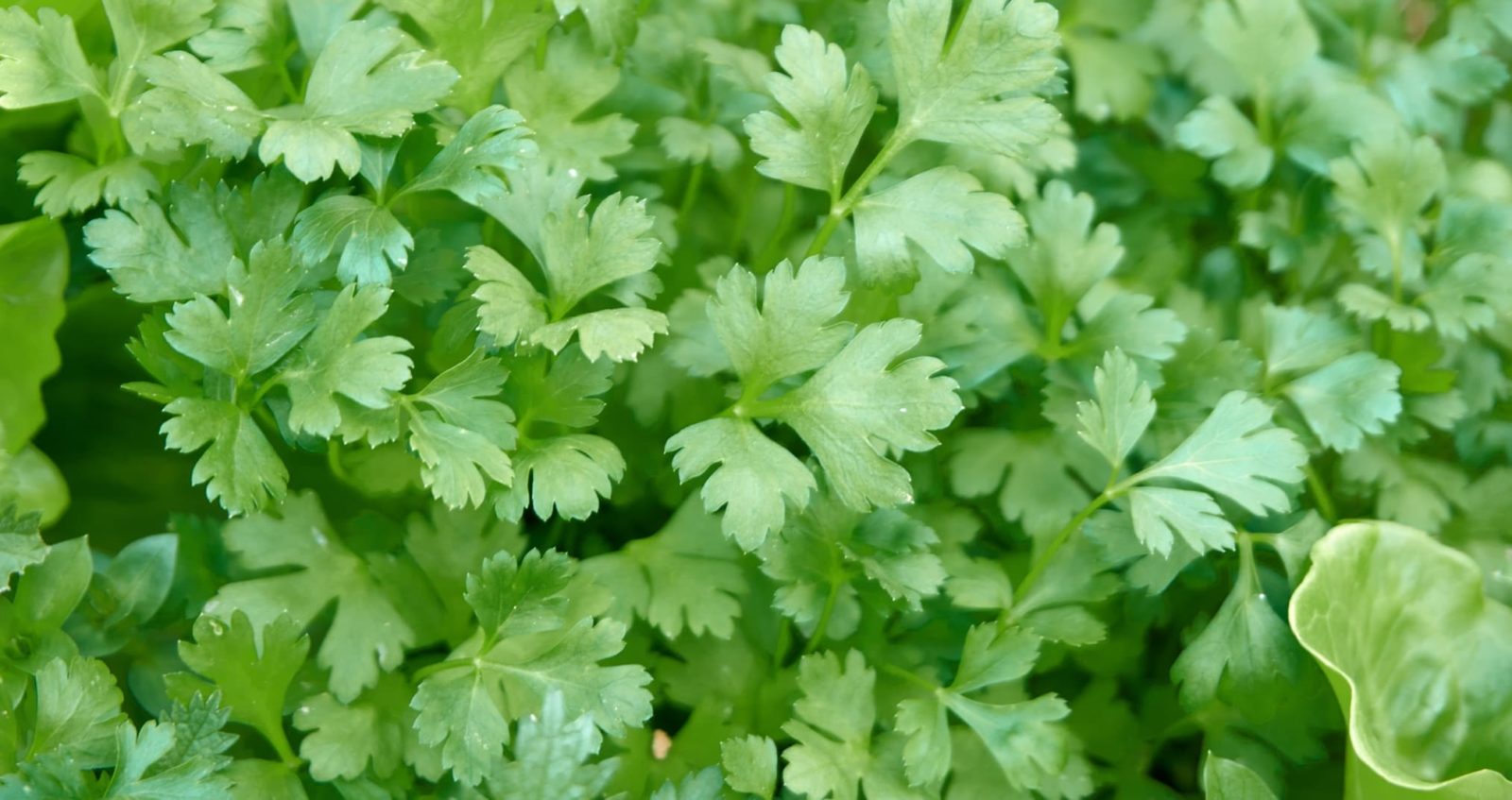
HERBS > PARSLEY
Chris is a gardening writer and nature enthusiast. He graduated from Oxford Brookes University in 2022 with an MA in Psychology. Chris works with the Leeds Green Action Society, helping their food cooperative by growing various fruit and vegetables on their two allotments in Hyde Park, Leeds.
Reviewed By ROY NICOL

Roy is a Professional Gardener and Horticultural Consultant, specialising in large garden year-round maintenance and garden development. He is an RHS Master of Horticulture and uses his research in the application of no-dig methods in ornamental garden settings. Roy has been a Professional Gardener for more than six years and is a member of the Chartered Institute of Horticulture, Professional Gardener's Guild and Association of Professional Landscapers (Professional Gardener).
PARSLEY GUIDES
Amongst the most popular herbs and spices you’ll find parsley, sometimes dried but preferably fresh.
The distinctive flavour works in all manner of dishes, whether as a sprig on top of a bowl of baba ganoush, chopped up and worked through some falafel mix, or as the main flavour in something like tabbouleh.
And if you enjoy cooking and love the fresh, crisp flavour of parsley, there’s nothing better than having your own supply ready to go as and when you need it.
Overview
| Botanical Name | Petroselinum crispum |
| Common Name(s) | Parsley |
| Plant Type | Herb |
| Native Area | Northwest Africa and Balkan Peninsula |
| Hardiness Rating | H6 |
| Foliage | Deciduous |
| When To Sow | March, April, May, June |
| Plant Out | July |
Sunlight
Preferred
Full Sun or Partial Shade
Exposure
Exposed or Sheltered
Size
Height
0.1 – 0.5M
Spread
0.1 – 0.5M
Soil
Preferred
Loam
Moisture
Moist but well-drained
pH
Any
While it’s possible to buy parsley fresh – either in a packet or growing in a pot – there’s a special charm to growing your own.
Not only can you humble-brag to friends and family that you grew some of the ingredients in this delicious plate of food yourself, but you’ll also notice subtle differences in the flavour.

Parsley is a plant grown mainly as a herb, thanks to its distinctive and versatile flavour.
The plant is native to Mediterranean countries but thanks to its popularity, has now been naturalised in many other regions.1Mahr, S. (n.d.-h). Parsley, Petroselinum crispum. Wisconsin Horticulture. Retrieved March 22, 2023, from https://hort.extension.wisc.edu/articles/parsley-petroselinum-crispum/
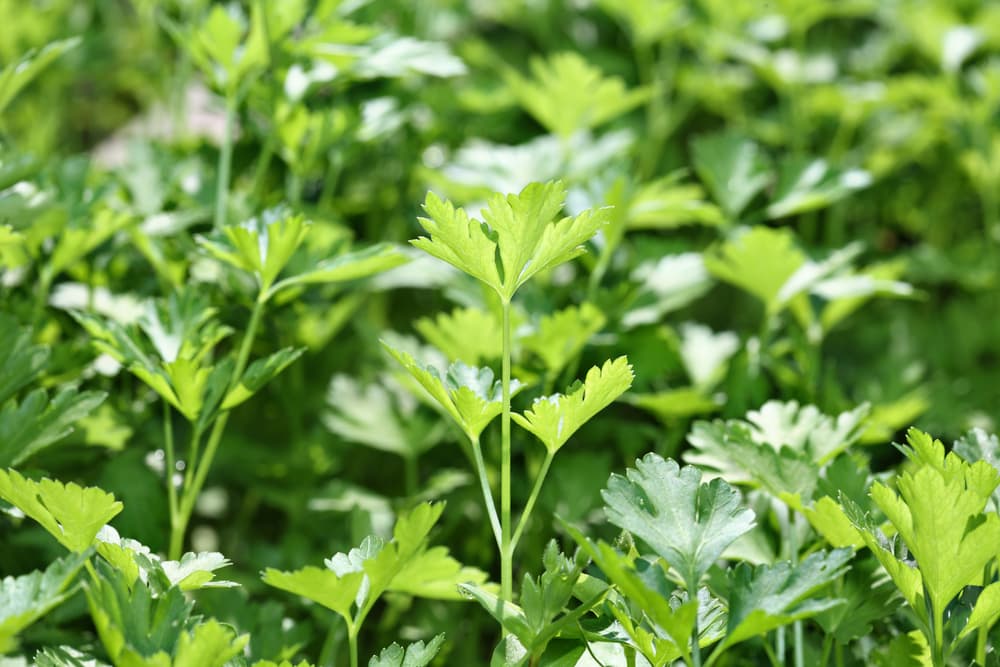
The type of parsley you’re probably most familiar with is curly leaf parsley: commonly used as a garnish to lift a dish both aesthetically and in terms of flavour.
Flat-leaved French parsley is also used in cooking and is grown in the same way.
Why Grow Parsley?
Realistically, the best reason to grow parsley is for its culinary applications.
As a plant it’s not the most attractive or exciting, so growing it to look at isn’t really recommended.
If you enjoy cooking though, and especially if you enjoy cooking dishes with some Mediterranean element, a supply of your own fresh, home-grown parsley will revolutionise your cooking endeavours.
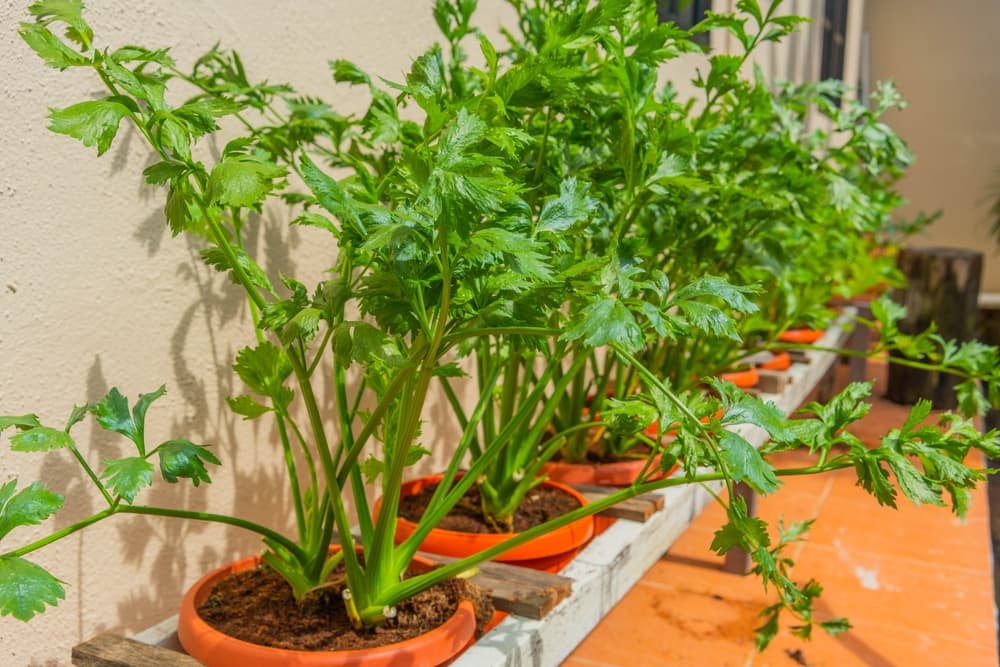
Rather than using a few sprigs from a pre-bought packet then watching in despair as the rest slowly go soggy and turn black, you can instead snip bits off of the mother plant as and when they’re required.
How To Grow Parsley
Growing parsley isn’t complicated.
In fact, there’s nothing here beyond the scope of even the most beginner gardener: you just need the most basic supplies like seeds, compost, and either a couple of pots or a patch of ground to work with.
Bear in mind before starting that while technically parsley is a biennial, it behaves like an annual when grown for food purposes, meaning you’ll need to sow anew each year.
Growing From Seed
One of the great things about growing your own parsley is that you can sow in such a way that guarantees a succession of harvests throughout the year.
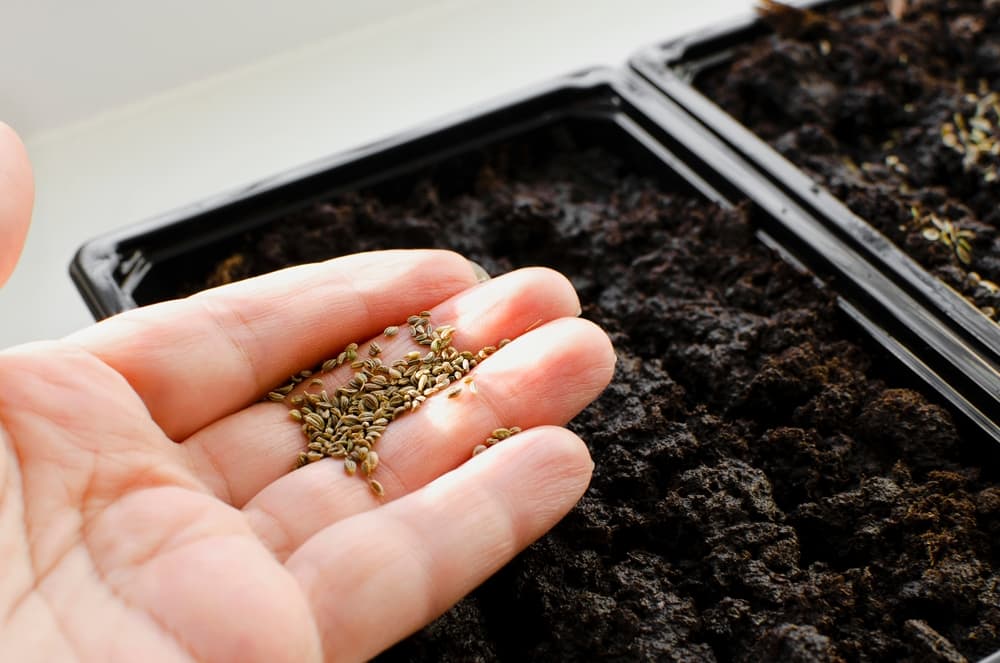
Sowing parsley is cheap and easy, and having a series of fresh plants coming into maturity in fortnightly or monthly intervals gives you constant access to the highest quality sprigs:
- Place parsley seeds by hand in rows 30cm apart.
- Leave a centimetre between each seed to give them space to grow.
- Push seeds about a centimetre below the surface of the soil: not too deep otherwise they won’t be able to grow.
Planting Out
Once your parsley is established, move them to allow 15cm between each plant.
It can take up to six weeks for the seeds to germinate so don’t worry if things appear to be moving slowly.

Where To Grow Parsley
Parsley likes soil that’s well-drained, and will favour a spot with full sun or partial shade.
If you’re growing parsley in a pot you can move it around, but if you’re growing in the ground take care to check the conditions are right before deciding on a spot.
Fertilising
Parsley enjoys seaweed-based fertiliser, and applying this every once in a while will encourage a bushier and more vibrant bloom.
Watering
Avoid letting the soil dry out as young parsley plants like to have access to good amounts of moisture.
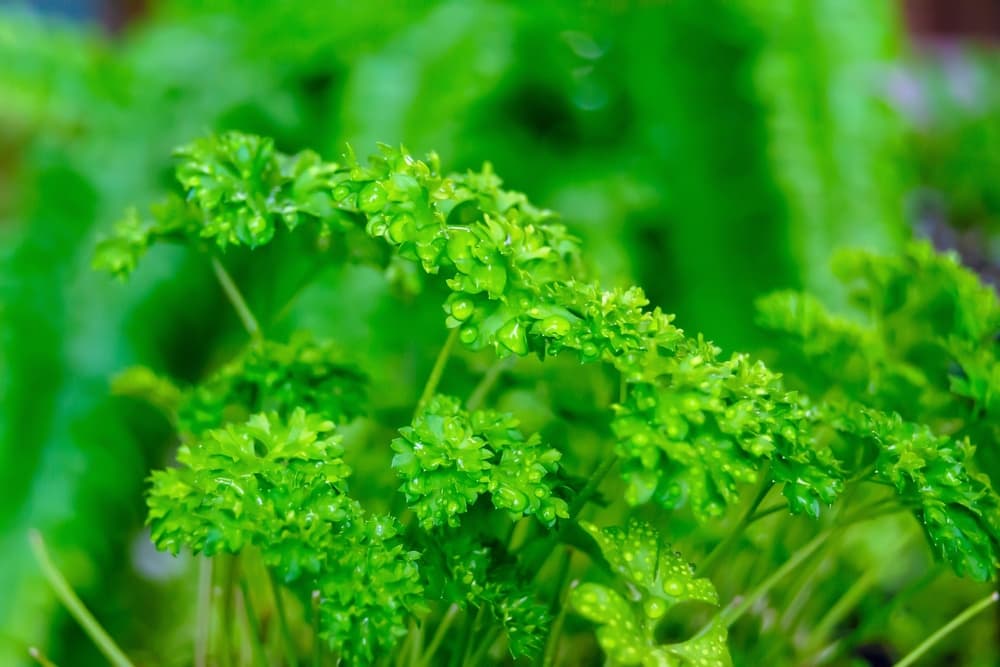
Keep an extra careful eye on your parsley plant during hot summer spells, as it’s prone to get dehydrated and dry out.
Pruning
Trim back any areas of your parsley plant that are turning yellow, as this will allow the plant to direct growth towards the stronger areas.
Yellow parsley isn’t as attractive or tasty as its bright green brethren, so there’s no sense keeping hold of it from a culinary perspective either.
Common Problems
Keep your eyes peeled for these pests, as they might take a fancy to your parsley crop and cause damage if left unattended.
Carrot Fly
Who’d believe that a specific type of fly would evolve to harass carrots and – like parsley – other members of the carrot family?
Well unfortunately, you better believe it.
These flies, Psila rosae, focus their entire life cycle on the pillaging of carrots and their close cousins.
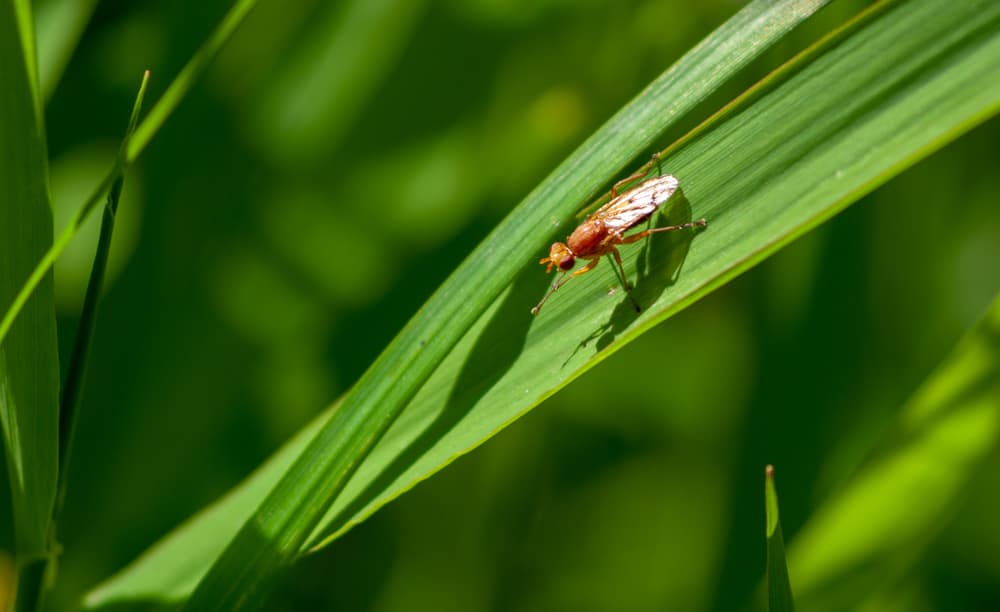
By tunnelling into the roots and eating various parts of the plant, these pests cause damage and rotting if left unattended.
“Prevention is the best cure for carrot fly, so sow thinly to prevent thinning seedlings which attracts the fly, use insect-proof netting to cover crops, water biological controls such as nematodes into the soil and rotate crops by not growing them in the same place in subsequent years,” says Master Horticulturist Colin Skelly.
As a last resort, use an organic pesticide spray if you see these critters investigating your parsley crop.
Slugs & Snails
Slugs and snails, predictably, like to interfere with parsley crops.
They will happily chew through the leaves, with the combined effect of reducing the amount available for cooking, and making you wary of using what’s left in case it’s covered in slime trails.
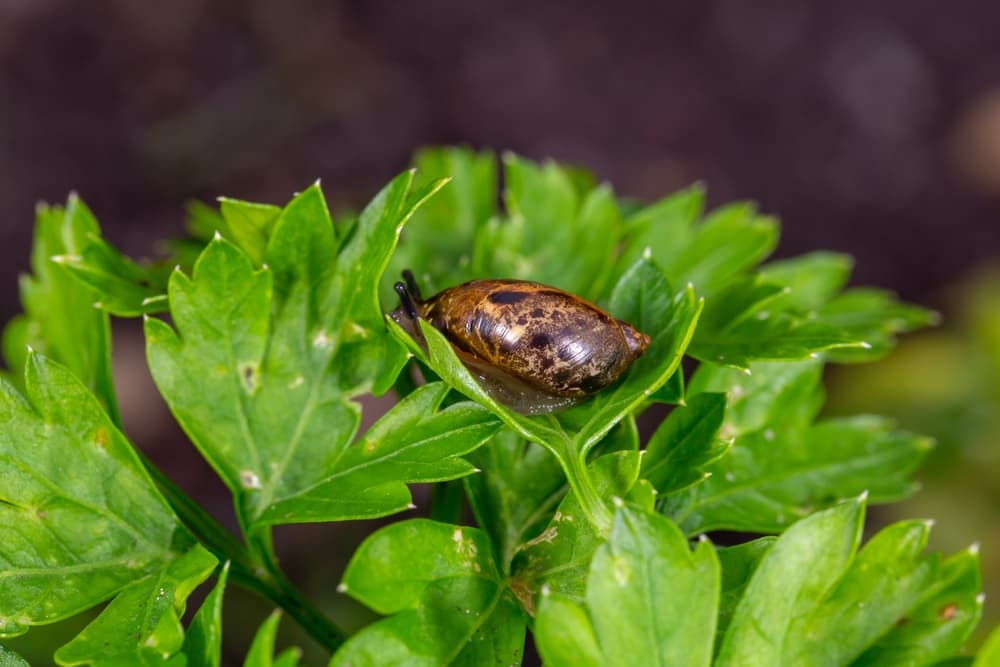
By planting parsley near onions and garlic you can deter these slimy visitors.
Alternatively look into the various types of traps and barriers available to keep them away from your crop and consider biological controls such as nematodes.
Storage
While best used fresh, there are a few ways to store parsley to keep your crop in good condition for later use.
Freezing is one option: chop up leaves, then fill ice cube tray sections with parsley and water to make little parsley cubes.
Simply chuck one of these into the pan when cooking a dish that requires this herb!
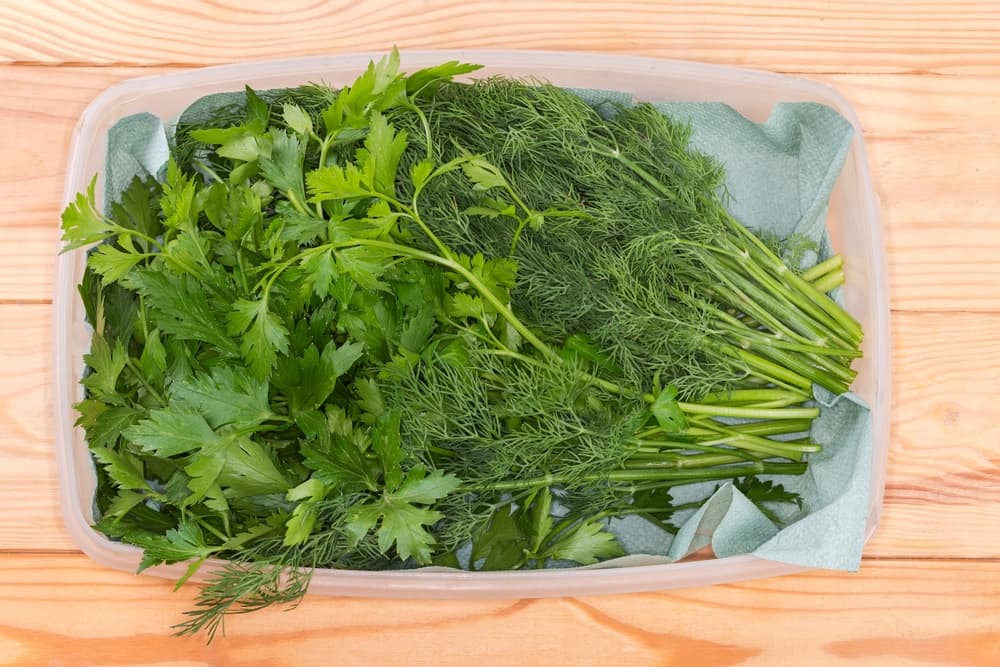
You can also dry parsley by hanging it in bunches in a warm, dark, airy space.
After a few weeks it’ll be noticeably dry, and you can crush up the leaves (either in a pestle and mortar, or with a quick blitz in a blender) and store them in a jar or similar container.
Again, this format of parsley isn’t great when you need that distinctive fresh flavour, but works very well in cooked dishes.
Hopefully you’re now intrigued and excited to grow your own parsley.
With cheap seeds and easy-to-follow growing instructions, it’s hard to go far wrong when growing this plant.
References
- 1Mahr, S. (n.d.-h). Parsley, Petroselinum crispum. Wisconsin Horticulture. Retrieved March 22, 2023, from https://hort.extension.wisc.edu/articles/parsley-petroselinum-crispum/
